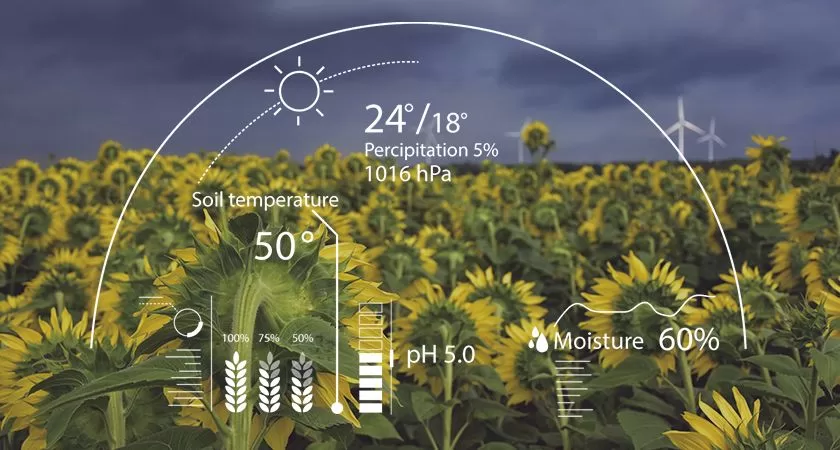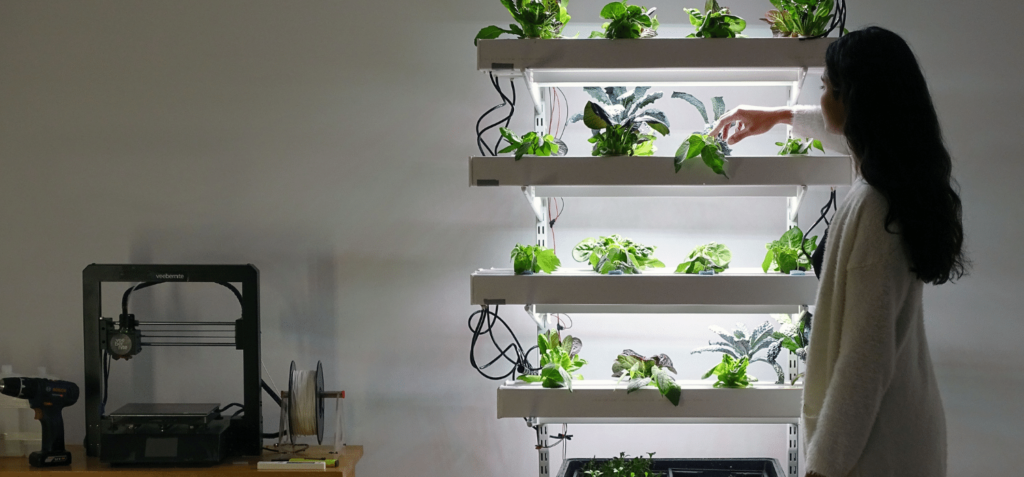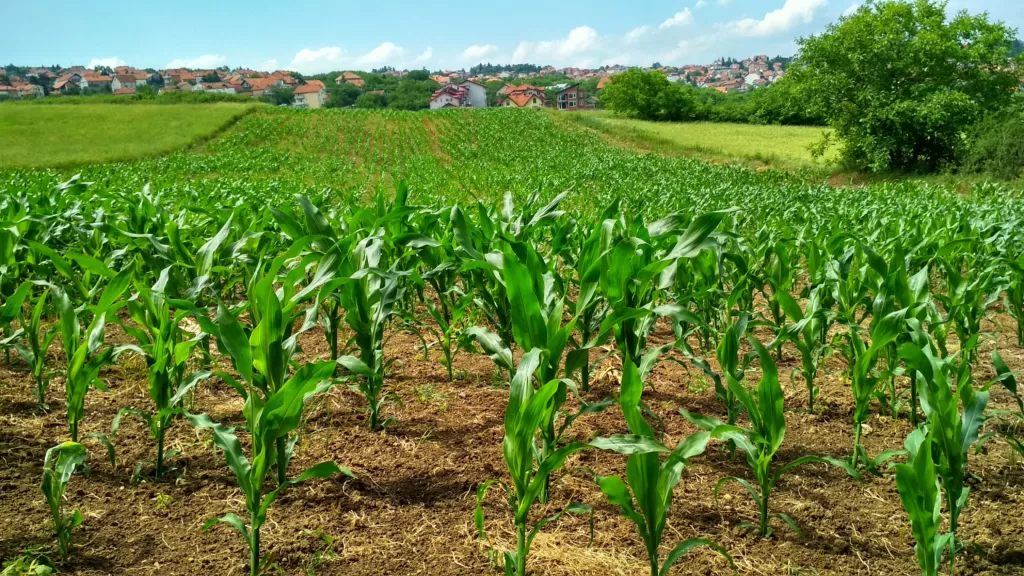LED grow lights should be kept relatively close to succulents, between 6 inches and 12 inches away, to provide the plants with the intense light they need for growth. It’s important to monitor the temperature and humidity levels around the plants to ensure they are not getting too hot or dry, and to adjust the distance of the lights as necessary. Also, you may want to consider a timer or automatic dimmer for your lights to control the intensity of the light and avoid burning the plants.
Table of Contents
Relation between succulent height and distance of led grow light
The distance between succulents and LED grow lights can affect the height of the plants. If the lights are too far away, the plants may not receive enough light to support healthy growth, and they may become elongated and leggy. On the other hand, if the lights are too close, the plants may become stunted or even burn.
As a general rule, the height of the succulents should be considered when determining the distance of the LED grow lights. For example, taller succulents may need to be kept further away from the lights than shorter succulents. Also, you may want to rotate your succulents regularly so that all sides get exposed to the light.
It is also important to monitor the plants regularly and adjust the distance as needed, based on their growth and health. A good way to do this is to start with a distance of around 6-12 inches, then move the lights closer or further away as needed. Keep in mind that other factors like humidity, temperature, and air flow also play a role in the growth of succulents.
What color LED is best for succulents?
The best color LED for succulents is typically a full spectrum LED light that includes a wide range of colors, including red, blue, and green.
The red and blue spectrum are particularly important for succulent growth. Red light promotes flowering and fruiting, while blue light promotes vegetative growth.
Green light is also important as it helps the plants to photosynthesize effectively and maintain their chlorophyll levels.
It is also important to note that succulents are adapted to grow in bright, full-spectrum sunlight, and many grow lights lack the intensity and spectrum of natural sunlight. So, it’s a good idea to check the PAR (Photosynthetically Active Radiation) and PPFD (Photosynthetic Photon Flux Density) of the LED light you are going to use to make sure it is suitable for the plants you are growing. Overall, a full-spectrum LED grow light that includes red, blue, and green wavelengths is the best option for succulents.

Why are my succulents stretching under grow lights?
There are a few reasons why succulents may be stretching under grow lights:
- Insufficient light: If the lights are too far away from the succulents or are not bright enough, the plants will not receive enough light to support healthy growth. This can cause the succulents to stretch and become elongated in search of more light.
- High temperatures: Succulents are sensitive to high temperatures and can stretch if they are getting too hot under the lights.
- Lack of humidity: Succulents need humidity to thrive, and if the air around them is too dry, they can stretch in response.
- Lack of CO2: Succulents need CO2 to photosynthesize effectively and if the level is low, the plant will elongate to try to get more light.
- Genetic reasons: Some succulents are naturally taller and thinner, and may stretch even under ideal growing conditions.
If your succulents are stretching under grow lights, try moving the lights closer to the plants, monitoring the temperature and humidity levels, and providing a CO2 supplement if needed. Also, make sure the plants are getting the right spectrum of light and intensity. You may also want to consider rotating the plants regularly to ensure all sides receive an equal amount of light.
How do you stress succulents with grow lights?
Stressing succulents with grow lights is generally not recommended as it can harm or even kill the plants. However, if you want to induce stress for the purpose of creating unique or more desirable color patterns, here are a few things to consider:
- Light intensity: Reduce the intensity of the light or increase the distance between the lights and the succulents. This can cause the plants to stretch and become more elongated.
- Light duration: Reduce the amount of time the plants are exposed to light each day. This can cause the plants to become more compact.
- Temperature: Increase the temperature around the plants. This can cause the succulents to lose color and become more pale.
- Water: Reduce the amount of water given to the plants, or only water them infrequently. This can cause the succulents to become more wrinkled and dehydrated.
- Rotate the plants frequently: This can cause the plants to be exposed to different levels of light and cause them to produce unique patterns or color changes.
It’s important to note that stressing succulents can be harmful to the plants and may lead to death. Therefore, it’s important to monitor the plants closely and not stress them too much. It’s also important to note that not all succulent species respond the same way to stress, so it’s best to research the species you are growing before attempting to stress them.
Do succulents prefer direct or indirect light?
Succulents generally prefer bright, indirect light. Direct sunlight can be too intense for most succulents and can cause sunburn, which appears as brown or white spots on the leaves.
Indirect light, on the other hand, provides the plants with the intense light they need for growth without the risk of sunburn. A good place to grow succulents is in a room with a lot of natural light, or near a window that receives bright, indirect light.
If you want to place succulents in a location that receives direct sunlight, you will need to acclimate the plants gradually to the new environment over a period of several weeks. To do this, you can place the plants in a shaded location for a few days and gradually move them to a sunnier spot over time.
It’s also important to note that different succulent species have different light requirements, so it’s best to research the specific species you are growing to determine the best light conditions for them.
Can succulents get too much light?
Yes, succulents can get too much light. While succulents need bright light to thrive, too much light can cause sunburn or bleaching of the leaves, which appears as brown or white spots on the leaves. It can also cause the leaves to become translucent and the color to fade.
Prolonged exposure to intense, direct sunlight can also cause the plants to dry out too quickly, leading to dehydration and wilting. To prevent succulents from getting too much light, it’s best to provide them with bright, indirect light. A good place to grow succulents is in a room with a lot of natural light, or near a window that receives bright, indirect light.
If you want to place succulents in a location that receives direct sunlight, you will need to acclimate the plants gradually to the new environment over a period of several weeks. To do this, you can place the plants in a shaded location for a few days and gradually move them to a sunnier spot over time. It’s also important to note that different succulent species have different light requirements, so it’s best to research the specific species you are growing to determine the best light conditions for them.

Should succulent soil be loose or tight?
Succulent soil should be well-draining and loose. Succulents are susceptible to root rot, which can occur if the soil is too tightly packed or if there is not enough drainage.
A well-draining soil mix typically contains ingredients such as coarse sand, perlite, and/or pumice, which help to improve drainage and aeration. These ingredients allow water to move through the soil quickly, reducing the chances of waterlogging and promoting healthy root growth.
It’s also a good idea to use a pot with drainage holes to allow excess water to escape. In summary, succulents require well-draining, loose soil to prevent root rot and promote healthy growth. A good soil mix for succulent can be made by mixing potting soil with coarse sand, perlite, or pumice, or you can buy cacti and succulent potting mix from the store.
What does a stressed succulent look like?
A stressed succulent may exhibit a variety of symptoms, depending on the cause of the stress. Here are a few common signs that a succulent may be stressed:
- Wilting or drooping: If a succulent is not getting enough water, it will begin to wilt or droop.
- Shriveling or wrinkling: If a succulent is getting too much or too little water, it may start to shrivel or wrinkle.
- Discoloration: If a succulent is not getting the right amount of light or is being exposed to too much heat, it may begin to lose color or turn yellow.
- Sunburn: If a succulent is getting too much direct sunlight, it may develop brown or white spots on the leaves, which is a sign of sunburn.
- Pest infestation: If a succulent is infested with pests, it may have small holes in the leaves, or a sticky residue on the leaves, or the leaves may appear distorted.
- Fungal or bacterial disease: If a succulent is suffering from a fungal or bacterial disease, it may have discolored or spotted leaves, or mushy or blackened areas on the stem.
It’s important to note that not all succulent species will show the same symptoms when stressed, and some may not show any symptoms at all. It’s best to monitor the plants regularly and correct any issues as soon as possible.






